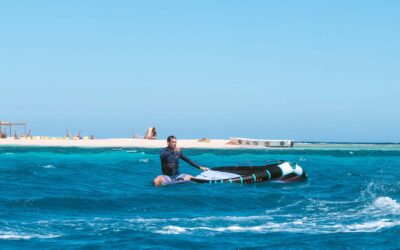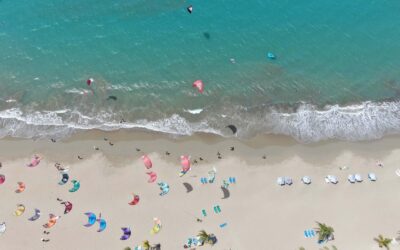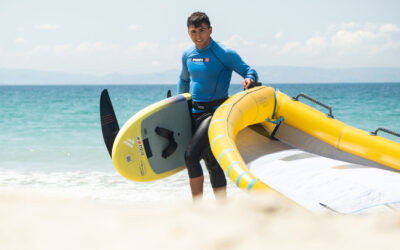HOW TO CHOOSE THE BEST WINGFOIL GEAR IN 2025: A PRACTICAL GUIDE
Wingfoiling has become one of the fastest-growing watersports, and every year brings new innovations that make gear more accessible and high-performing. Whether you’re a beginner or an experienced rider, choosing the right setup in 2025 is key to making the most of your sessions. From the board to the wing and foil, several factors need to be considered to match your gear to your level, body type, and wind conditions.
At ION CLUB, we use exclusively DUOTONE and ION gear for all our wingfoil lessons and rentals. In this guide, we’ll walk you through how to build your ideal wingfoil setup in 2025.
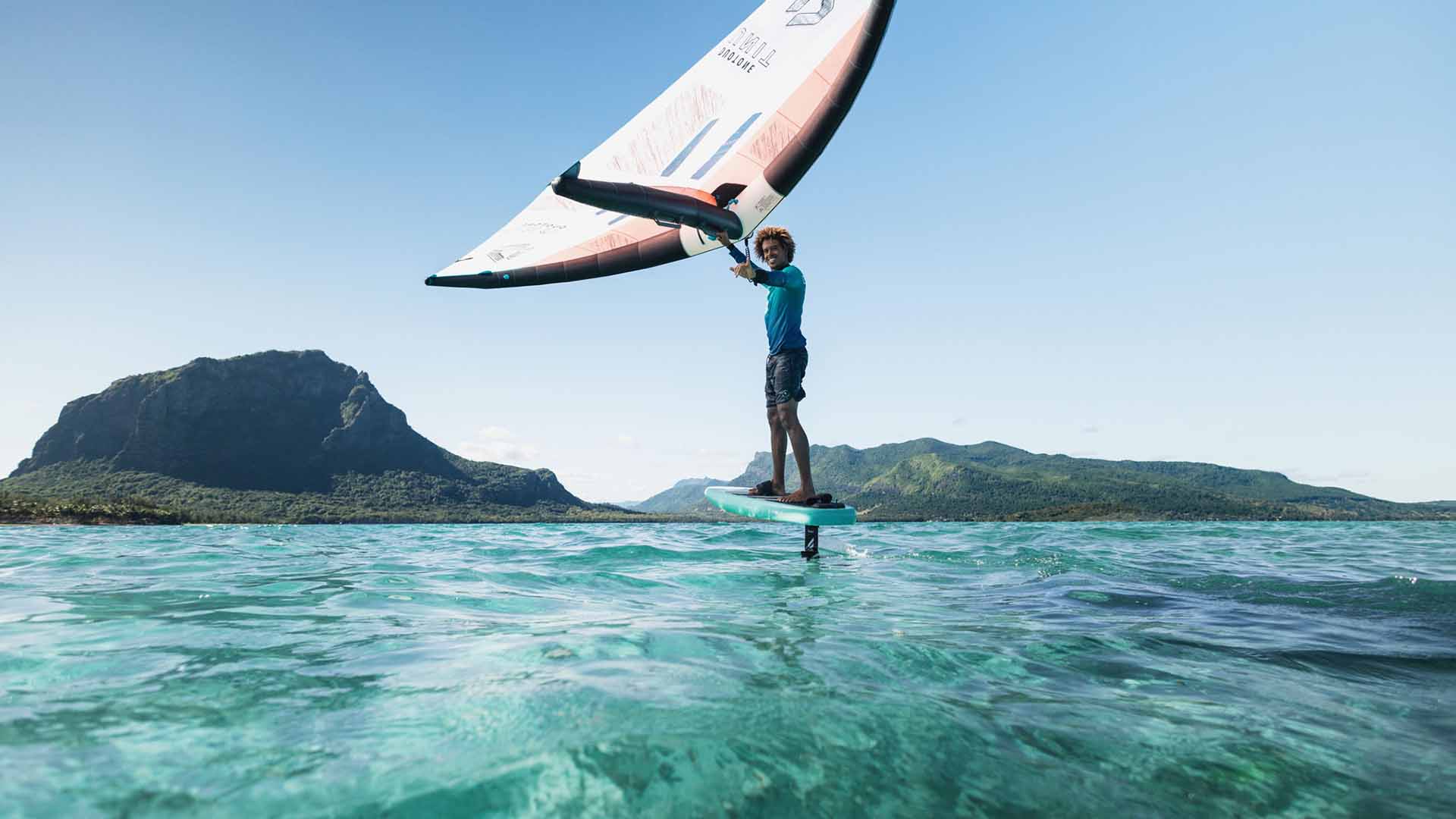
1. Choosing the Right Wingfoil Board
Volume and Size Matter
The board is crucial for easy takeoff and stable progression. Its volume and size affect your stability and your ability to lift off the water.
Here’s a quick reference guide:
- Beginner: High volume (110–140 liters) for maximum stability and easy learning
- Intermediate: 80–100 liters, depending on your size and skill
- Advanced: Less than 80 liters for a more compact and responsive board: ideal for quick maneuvers and wave riding
💡 Tip: Add 20 to 30 liters to your body weight to estimate your minimum board volume. (e.g. if you weigh 70 kg → aim for around 100 L)
What Shape to Choose?
- Wide and short board: great for beginners thanks to its extra stability
- Narrower and more compact board: perfect for experienced riders looking for performance in waves or jumping sessions

2. The Foil: Your Performance Engine
The foil is the most technical part of your gear. It consists of three parts: the front wing, mast, and fuselage. Each part plays a key role in your speed, maneuverability, and lift.
Choosing the Front Wing
The front wing determines how much lift and stability you get.
- Large wing (1500–2000 cm²): perfect for beginners and light winds, very stable and lifts easily
- Mid-size wing (1000–1500 cm²): more responsive and faster, suited for intermediate riders
- Small wing (<1000 cm²): for experts looking for speed or wave riding performance
Mast Length
- 60–70 cm: great for beginners and shallow water
- 80–100 cm: for intermediate to advanced riders, allowing better control in chop and more freedom of movement
💡 Tip: If you often ride in small waves or choppy water, go for a longer mast to avoid breaching.

3. The Wing – Your Engine Above Water
The wing is what pulls you forward. Its size and design impact how well you can ride in different wind conditions.
What Size to Choose?
- Light wind (8–12 knots): go big – 5 to 7 m²
- Moderate wind (12–18 knots): 4 to 5 m² is usually enough
- Strong wind (18+ knots): go smaller – between 3 and 4 m²
What’s New in 2025?
- Boom wings (rigid handles): improved handling and linear power
- Ultra-light wings made with innovative materials for better lift and less fatigue during long sessions

4. Must-Have Accessories
Don’t overlook the accessories, they make a big difference in comfort and safety.
Leashes (Board + Wing)
Absolutely essential to avoid losing your gear during crashes. Pick one suited to your height and discipline.
Helmet + Impact Vest
A must for beginners and foil riders. They protect you from unexpected falls and collisions.
Harness
Wingfoil-specific harnesses are becoming more popular. They help take pressure off your arms so you can ride longer and more comfortably.
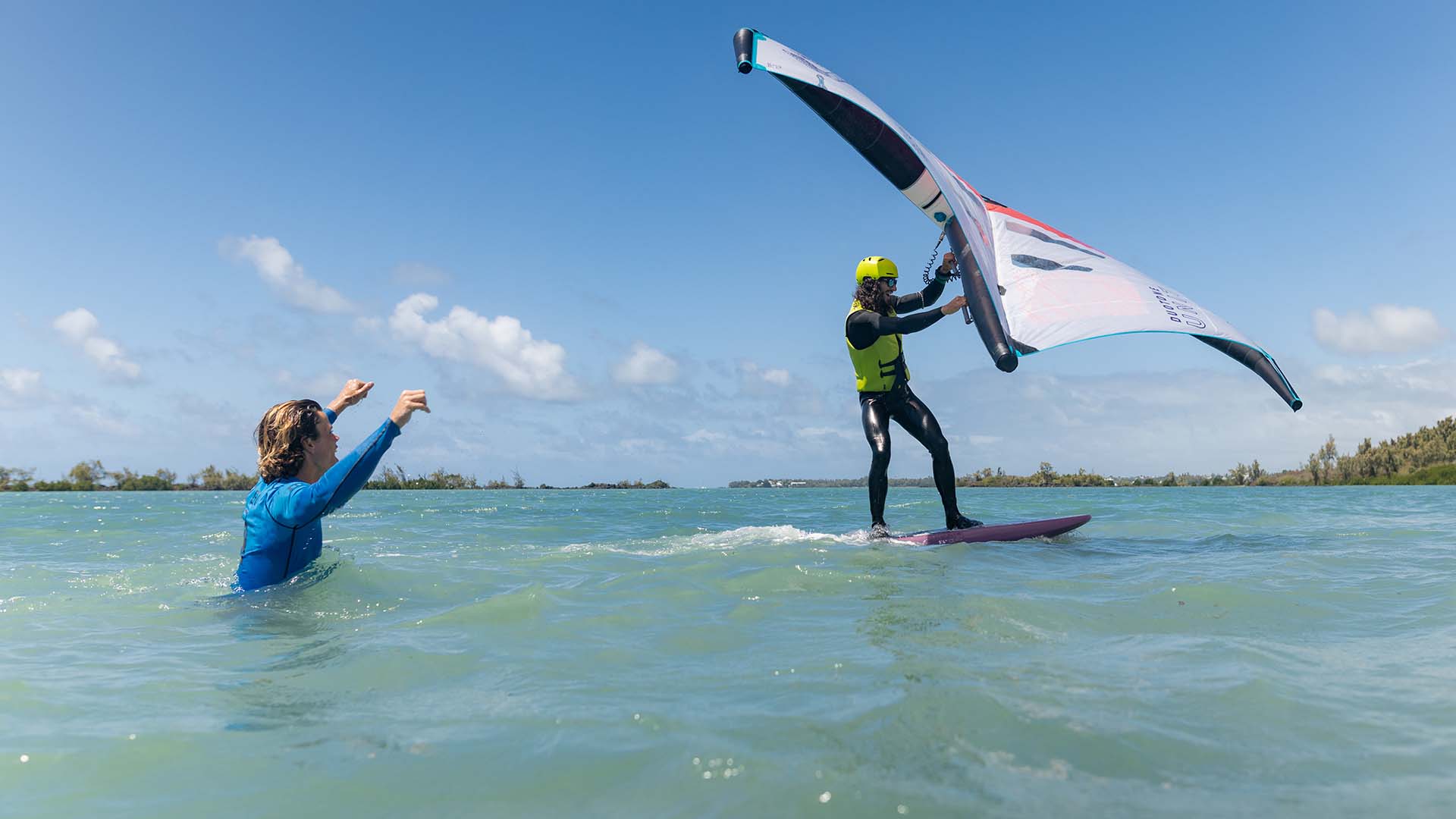
5. Choosing Gear Based on Your Level & Goals
Beginner: Focus on Stability and Forgiveness
Your goal is to lift off easily and stay balanced.
- Big board (110–140 L)
- Large foil front wing (1500+ cm²)
- Wing size: 5–6 m² depending on wind
Intermediate: Aim for Versatility
- Mid-volume board (around 100 L)
- Mid-size foil (1200–1500 cm²)
- Wing suited to moderate wind
Advanced: Go for Performance
- Compact board (<80 L)
- Small front wing for speed and wave play
- Lighter, more responsive wing
Final Tips for Choosing Your Gear
- Try before you buy: Test different setups to find what works best. After your lessons with ION CLUB, feel free to ask our instructors for advice.
- Match your gear to your home spot: Lake, lagoon, or open sea? The right setup will vary.
- Ask the pros: Our ION CLUB coaches are here to help you choose gear based on your skill level and goals.

Wingfoil in Egypt: the ultimate guide
On the shores of the Red Sea, Egypt's wingfoil spots are worth exploring at least once in a lifetime! With ideal weather conditions for most of the year, thanks to a steady wind and warm, pleasant temperatures, do not hesitate to come and practice your favourite sport...
Cabarete Kitesurfing: Everything You Need to Know
In the Caribbean archipelago, it’s almost impossible to have never heard of the village of Cabarete, once a small fishing village, and now a legendary kitesurfing spot! Located in the northwest of the Dominican Republic, the kitesurfing community has blended into the...
Choosing Your Wingfoil Equipment: Our Tips
Introduction to Choose Wingfoil Equipment Riding with quality wingfoil equipment suited to your level is important if you want to progress and enjoy your time on the water! Whether you are a beginner, intermediate, speed enthusiast, or freefly lover, your wingfoil...

